Keeping a marine fish tank opens a world of opportunities that freshwater tanks simply can’t match. The biological diversity allowed by the conditions of saltwater means that marine fish are more uniquely shaped and coloured. Not only that, but you can also fill your marine tank with invertebrates, cephalopods and sea slugs. we take a look at a few of the less commonly found inhabitants of marine aquariums. Whilst keeping some of these requires a fair deal of advanced knowledge and care they are all very interesting livestock options for a marine fish tank.

5 Unusual Marine Fish Tank Inhabitants
by edstorm
A look at five creatures found less commonly in marine aquariums.
Octopi
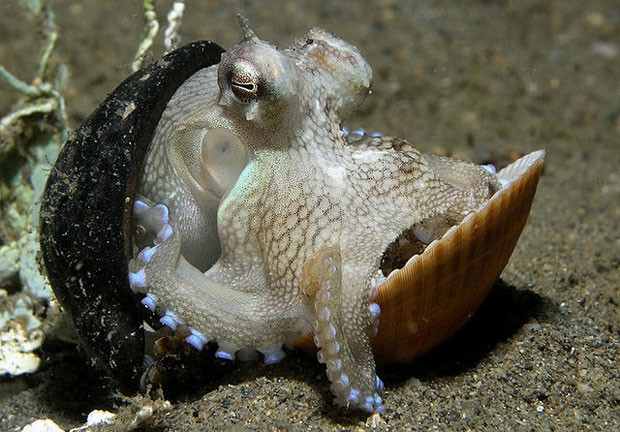 Octopus marginatus |
Keeping octopi in a tank is a delicate option. First off, a tank with an octopus needs to be completely clear of other marine fish, as the octopus is very much a predator, and will quickly eat whatever else is in the tank with it. Nevertheless, a well-kept octopus tank can be very beautiful, although difficult to maintain. Octopi require specific lighting conditions as they are nocturnal creatures and would not enjoy the bright glare of your average reef-type tank.
They also need very specific oxygen levels in the water, and need to be fed a meat diet. You’ll also need to ensure that your tank has no place for the octopus to escape. They are highly intelligent creatures, and have been known to not only escape tanks, but to escape into another nearby tank, grab a quick meal, and then return to their proper tank as if nothing had happened!
Sea Slugs
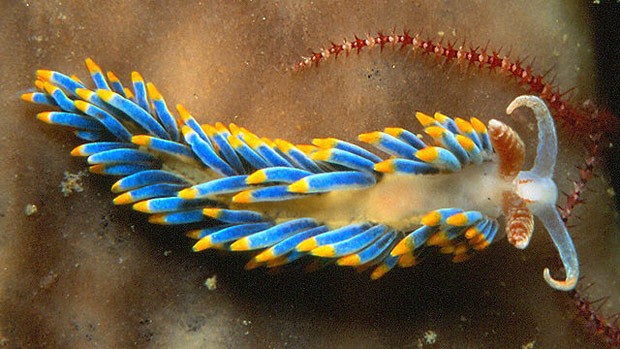 Berghia coerulescens |
Sometimes going by their scientific name, nudibranches, sea slugs are a wildly colourful addition to any reef marine tank. Displaying bright and vivid colours as well as having unique body shapes, a sea slug should not be likened to its land-bound namesake. Getting the slug into your tank is a delicate process. Nudibranches are known for their sensitivity, and need to be very slowly acclimatized when entering a new tank.
A particularly curious type of sea slug is the Sea Hare famous for its two ‘wings’ that fold over to protect its internal shell plate, and which, when the slug is threatened, can be extended to propel themselves, albeit awkwardly, away from a predator. It also uses ink to confuse them, much like an octopus or squid.
Starfish
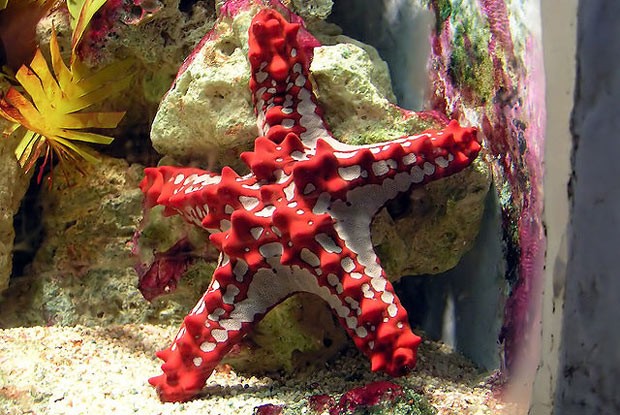 Red-knobbed Starfish |
Besides being a unique shape, starfish also provide an important role in a marine fish tank. Starfish sift and burrow through the substrate of your tank while they search for food, and pose no threat to the other inhabitants of your tanks as they are not particularly predatory nor are they mobile. Starfish, like sea slugs and other delicate marine animals, need to be slowly acclimatized to a tank before they are introduced in case the change in temperature, oxygen and nitrogen levels cause too much shock.
If your substrate is not naturally rich in algae, you will have to do your best to emulate its natural diet with biological skimmers that coat the rocks and coral in your marine tank with the nutritious matter they would find naturally in the wild.
Shrimp
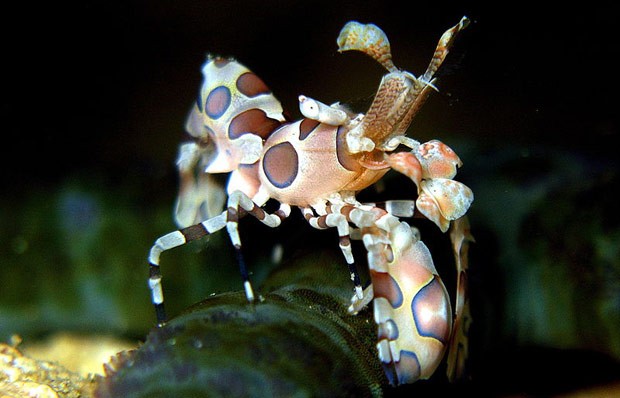 Harlequin Shrimp |
Shrimp, although having tough exoskeletons, will be eaten up by other fish if they are large enough to fit a shrimp in their mouths. Shrimp, being a natural food source for larger fish in the wild, have no immunity in a fish tank from greater fish, which is why the best kind of tank for a shrimp is a tank occupied by only other shrimp.
Most shrimp kept by hobbyists are shrimp that have very specific and noticeable colouration and patterns which would make the shrimp not last a second in the wild as they would be more easily found and eaten by predators, which makes the shrimp-centric marine tank the perfect environment to enjoy these unique creatures.
Jellyfish
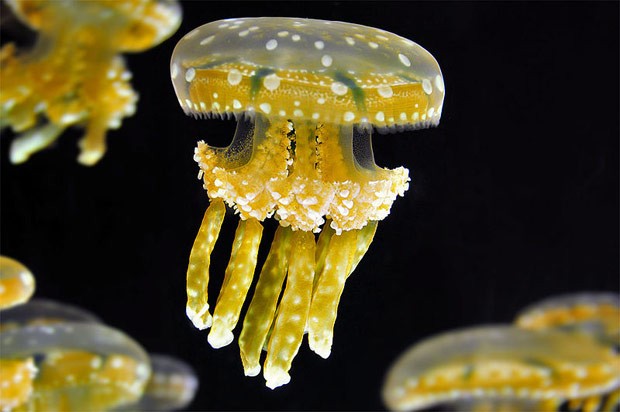 Spotted Jellyfish |
Keeping jellyfish in a marine tank should be reserved for experienced hobbyists, who know where to source planktonic food and also how to provide the best saline and current conditions for them.
A tank that houses is called a Kreisel, and it is built such that the jellyfish have sufficient current to swim against as is normal in their natural environment. It is essential for jellyfish keepers to have sufficient current in their tank to keep them healthy but have the water current flow into and out of the tank in such a way that it doesn’t take the jellyfish with them. The water flow needs to be a gentle ‘tumbling’ kind to keep the jellyfish suspended, but drawn out enough that it doesn’t suck the jellyfish into the filtration system itself.
If you’re looking for somewhere to source rare marine fish, try Elite Aquatics. Situated in Cape Town, with shipments arriving from all over the world throughout the year, you can place your own orders for fish so you’ll never have to spend hours in a pet store looking for that one elusive specimen.
You might also like
A Fast and Effortless Way to Clean your Fish TankAfter twenty years of caring for goldfish, I've just been so startled by an a...
All You Need to Know About Keeping Coolie LoachesHow to keep Coolie Loaches in your tropical fish tank. Learn how to care for ...
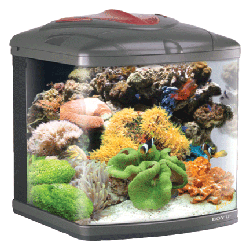


 Herbal Medicine in South Africaon 08/20/2014
Herbal Medicine in South Africaon 08/20/2014
 Citroën, Europe’s First Mass Producer of Carson 07/04/2014
Citroën, Europe’s First Mass Producer of Carson 07/04/2014
 Use Smartphone Technology for Evidence Collectionon 07/03/2014
Use Smartphone Technology for Evidence Collectionon 07/03/2014
 Smart, Sneaky Solutions for Hiding Valuableson 06/13/2014
Smart, Sneaky Solutions for Hiding Valuableson 06/13/2014
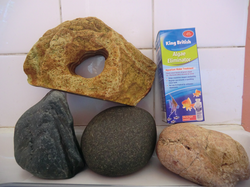
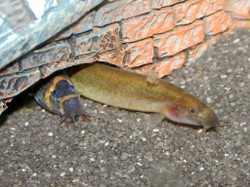
Comments
These are gorgeous. But I was under the impression that marine tanks are very high-maintenance. Maybe when I stop traveling so much I'll set one of these up.
Stunning pics. Think from what I remember something else to keep in mind with Jellyfish is that many species have a relatively short lifespan.